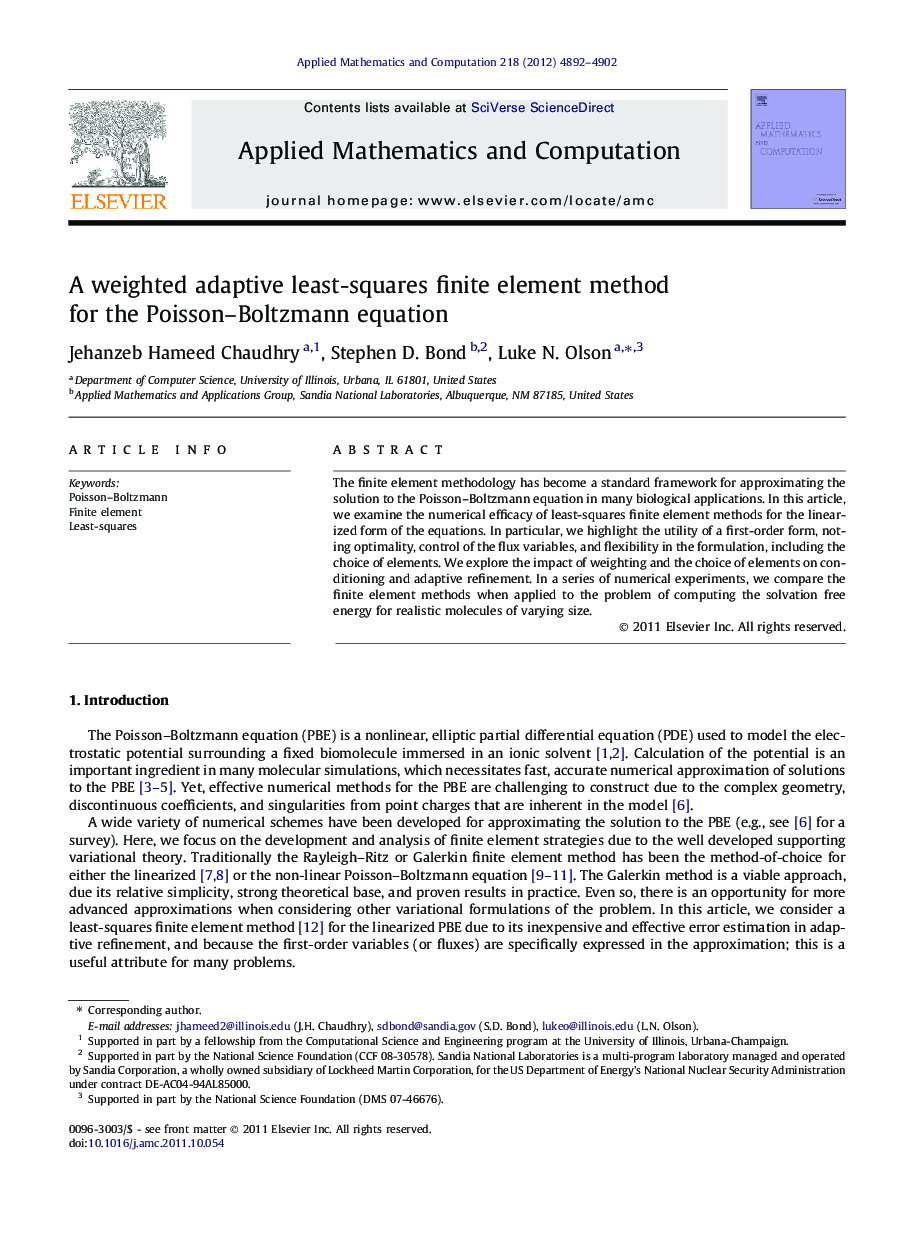| Article ID | Journal | Published Year | Pages | File Type |
|---|---|---|---|---|
| 4631320 | Applied Mathematics and Computation | 2012 | 11 Pages |
The finite element methodology has become a standard framework for approximating the solution to the Poisson–Boltzmann equation in many biological applications. In this article, we examine the numerical efficacy of least-squares finite element methods for the linearized form of the equations. In particular, we highlight the utility of a first-order form, noting optimality, control of the flux variables, and flexibility in the formulation, including the choice of elements. We explore the impact of weighting and the choice of elements on conditioning and adaptive refinement. In a series of numerical experiments, we compare the finite element methods when applied to the problem of computing the solvation free energy for realistic molecules of varying size.
